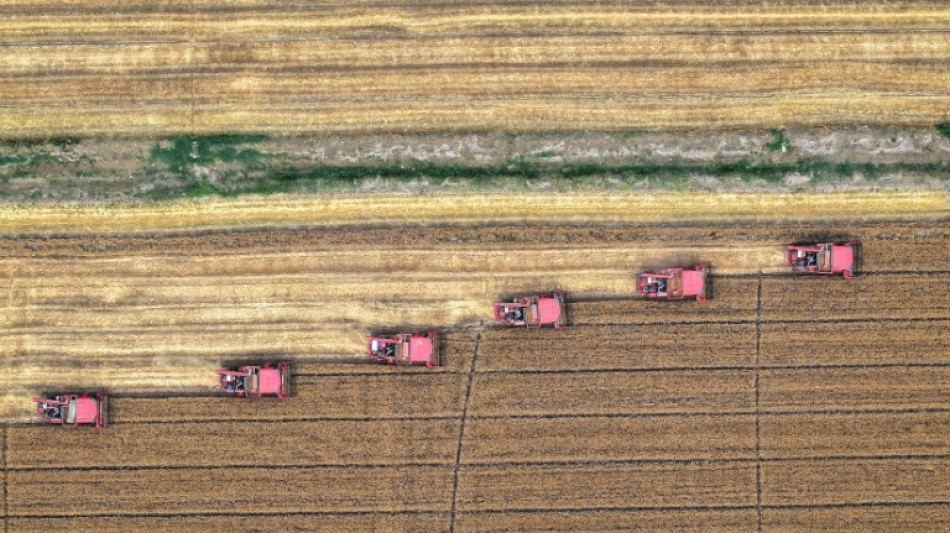
RBGPF
0.0000

Climate change is on track to reduce by 11 percent in 2100 the yields that today provide two-thirds of humanity's calories from crops, even taking into account adaptation to a warming world, scientists said Wednesday.
As soon as 2050, this "moderate" scenario in which greenhouse gas emissions peak around 2040 and slowly taper off -- a trajectory aligned with current trends -- would see global losses of nearly eight percent.
And if carbon pollution worsens, the loss of calories across the same six staples -- corn, wheat, rice, soybeans, sorghum and cassava -- rises to nearly a quarter by century's end, the researchers reported in Nature.
More generally, every additional degree Celsius of warming reduces the world's ability to produce food from these crops by 120 calories per person per day, or nearly five percent of current daily consumption, they calculated.
"If the climate warms by three degrees, that's basically like everyone on the planet giving up breakfast," said co-author Solomon Hsiang, a professor at the Stanford Doerr School of Sustainability in California.
The steepest losses will occur at the extremes of the agricultural economy: in modern, Big Ag breadbaskets that currently enjoy some of the world's best growing conditions, and in subsistence farming communities that typically rely of small cassava harvests.
North America would be hit hardest, losing a fifth of yields by 2100 in the moderate carbon pollution scenario, and two-fifths if emissions from burning fossil fuels continue apace.
Working with more than a dozen scientists, Hsiang and co-leader Andrew Hultgren, an assistant professor at the University of Urbana-Champaign, sifted through data from more than 12,000 regions in 55 countries.
- Erratic weather -
Previous calculations of how a warming world will impact crop yields generally failed to consider the ways in which farmers would adapt, such as switching crop varieties, shifting planting and harvesting dates, and altering fertiliser use.
The scientists estimated such adjustments would offset about a third of climate related losses over the next 75 years in the scenario of rising emissions, but that residual impacts would still be devastating.
"Any level of warming, even when accounting for adaptation, results in global output losses for agriculture," said Hultgren.
With the planet about 1.5C hotter than preindustrial levels in the late 1900s, farmers in many regions are already experiencing longer dry spells, unseasonable heatwaves and erratic weather that undermines yields.
The nutritional value of most crops also declines with hotter temperatures, earlier research has shown.
The study revealed sharp variations in the impact of global warming on different crops and regions.
In the "worst-case" scenario of rising carbon emissions, corn yields would plummet 40 percent by 2100 across the grain belt of the United States, eastern China, central Asia, and the Middle East.
For soybeans, yields in the US would decline by half, and increase by a fifth in Brazil.
Wheat losses would drop by a fifth in eastern and western Europe, and by 30 to 40 percent in other wheat-growing regions: China, Russia and North America.
Cassava would be hit hard everywhere it's grown.
"Although cassava does not make up a large portion of global agricultural revenues, it is an important subsistence crop in low- and middle-income countries," the researchers pointed out.
Among the six crops examined, rice is the only one that stands to benefit in a warmer climate, mainly due to warmer nights.
M.Soucek--TPP